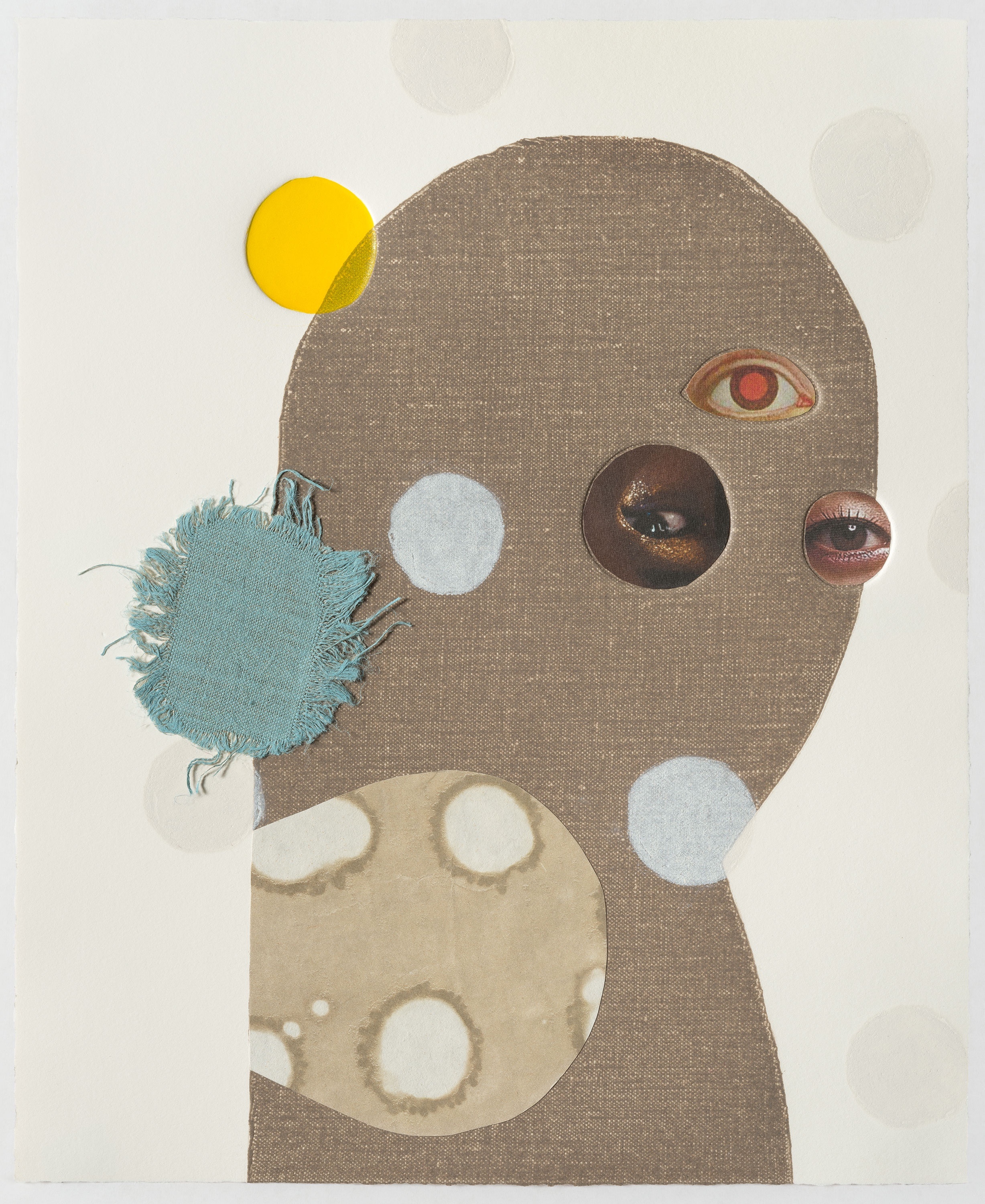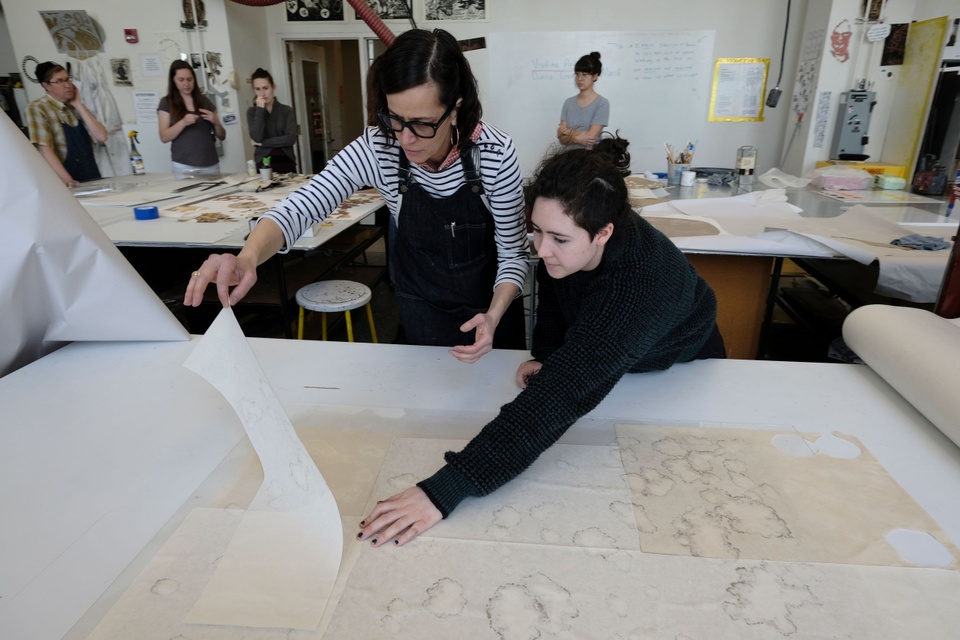Diana Guerrero-Maciá
The Beautiful Girls
Diana Guerrero-Maciá served as the Arthur L. and Sheila Prensky Island Press Visiting Artist in March 2017. She developed four prints during her one-week residency, working alongside master printer Tom Reed and Sam Fox School students.
Guerrero-Maciá’s suite of prints coincides with a larger body of work titled The Other Ones, reflecting on critical concerns about race and bodies using hybrid references of otherness. The prints also nod to the important influence of collage artist Hannah Hoch. Guerrero-Maciá cites Hoch’s series From an Ethnographic Museum and specifically the 1920 collage The Beautiful Girl—the titular subject of this suite of prints.
PROOF essay by Erin Dziedzic, curator and writer
Painting, textiles, and collage have consistently orbited the interdisciplinary work of Chicago-based artist Diana Guerrero-Maciá. Through the use of semiotics, her visual vocabulary continues to engage themes such as raising critical concerns about race and the human body, leveling the gendering of art genres and materiality, and adopting historical modes of iconography informed by contemporary social currents and cultures.
During her residency at Island Press in spring 2017, Guerrero-Maciá made four new works that compose The Beautiful Girls series. Each depicts a face comprising shapes, textures, and imagery created using multiple printmaking processes and techniques such as embossing, relief, monoprint, inkjet printing, and collagraphy. The reductive aesthetic of these faces invokes Guerrero-Maciá’s apt use of semiotics, where shape, color, and texture provide depth in material meaning whereby breaking up binaries—black/white, common/distinct, male/female—of archetypal beauty.
The eyes in The Beautiful Girls No. 2 were sourced by searching Google for words like beauty, which yielded results such as images of 1960s English model Twiggy who was known for her lashy doll eyes. Guerrero-Maciá then upends this one-dimensional media output of beauty by applying a third eye. The wide eyes become a source of validation, bearing witness to the issues of reading value on one’s appearance. Simultaneously, the third eye hovering above, which is from a traditional medical journal illustrating problems with the eye, prompts considerations of the strengths/limitations of sensorial perceptions and perhaps offers reflection on one’s inner space.
Materials like linen, paint, and photographic imagery are collaged and transmuted by various print processes in this series, creating echoes of other references—painting (the historical use of Belgian linen), fashion, the body, gender, race, economics—thereby emphasizing Guerrero-Maciá’s interest in the intergenerational complexities of meaning inherent in materials. By mining these materials in an abstract way Guerrero-Maciá focuses on the psychological or subjective inflection of her figural depictions rather than prescribing an objective narrative. This aspect of the series connects Guerrero-Maciá’s work to German artist Hannah Höch’s photomontages of the 1920s, a noted influence for her innovations in collage. Höch’s Das schöne Mädchen The Beautiful Girl followed by her Ethnographic Museum series (1924–30), like Guerrero-Maciá’s print collages, investigate mainstream representations of gender and racial and social economics through the guise of implanted semiotic shape and imagery.
Guerrero-Maciá has long been interested in the subtle transformation of things—materials into meaning—which she continues in The Beautiful Girls series. Considered as faces rather than portraits, Guerrero-Maciá’s works open further reading on and a subjective dialogue and resonance with the information (imagery and materials) provided. Beauty, then, is indeed in the eye of the beholder and not a prescribed leitmotif in these works.














